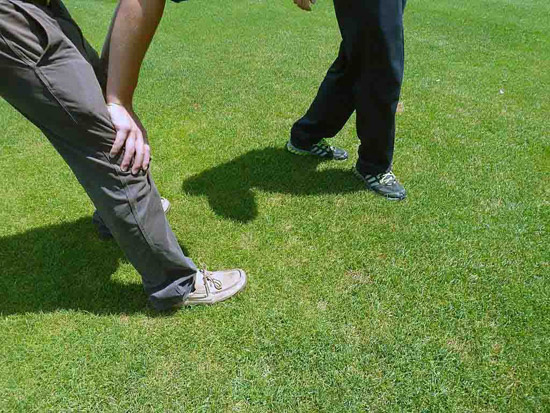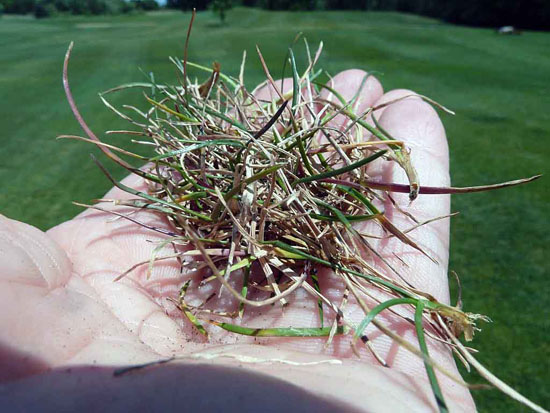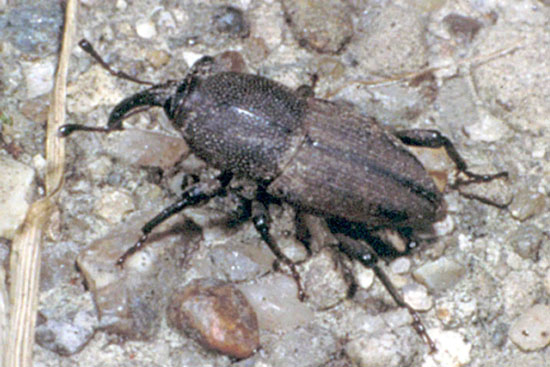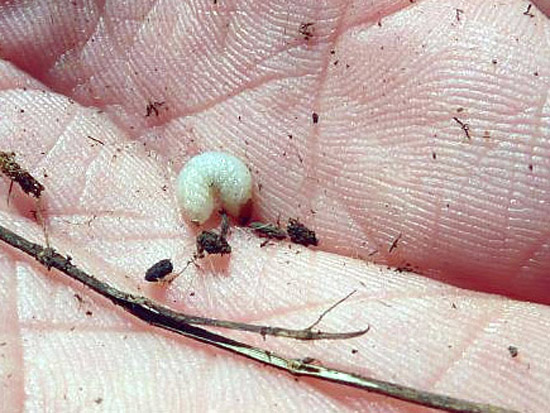Issue 11, July 2, 2012
Billbugs
We have had reports of bluegrass billbug injury in northern Illinois turf. Damage is appearing as two-to three inch roughly circular areas of browning turf. Tugging on the damaged turf causes it to break loose easily, revealing chewed, frayed ends at the base of the stems. Close examination will find holes at the stem bases where the young billbugs emerged after tunneling in the stems. Sawdust-like frass is usually present at the turf crowns. Dig in the soil to uncover the mature, one-half inch long, legless, fat, slightly curved larvae that are feeding on the roots.

Bluegrass billbug damage on fairway.

Bluegrass billbug turf injury.
Adult billbugs are cylindrical, 3/8-inch-long, hard-shelled, blackish beetles with elongated snouts like elephants. These beetles are generally flightless, so they have to walk everywhere. This lack of long-distance movement usually confines damaged areas somewhat. Because adults are very long-lived, they may be found at any time of year. They will be found walking through the grass or along the edge of sidewalks. Because the adults lay eggs at various times through the year, grubs in all sizes also are found throughout the year. The adult has a tiny mandible (jaw) at the end of the “snout” that it uses to chew a hole in the stem of a grass plant. It then turns around and lays an egg in that hole.

Bluegrass_billbug_adult
The resulting larva tunnels down through the stem of the grass plant and continues through the rhizome until it gets too big to fit inside the stem. It then emerges into the soil to feed on the grass roots, as do other white grubs. Although larvae can be found at any time of the year in all sizes, they are most numerous at this time of year, making it an ideal time to apply controls. The damage threshold for billbugs is similar to that for grubs. Expect damage at 10 or more per square foot.

Bluegrass_billbug_larva
Control is the same as for other grubs. Chlorantroniliprole (Acelepryn) and trichlorfon (Dylox) provide control within a few days, whereas imidacloprid (Merit), clothianidin (Arena) and thiamethoxam (Meridian) take a couple of weeks. Insecticidal nematodes, particularly Heterorhabditis bacteriophora, also provide control within a few days. Insecticidal nematodes typically provide about 60% control, whereas chemical insecticides should provide about 95% control on younger larvae. However, insecticidal nematodes will provide better control on large, mature larvae. (Phil Nixon with photos from Derek Settle)
Author:
Phil Nixon